Project Name
MIYA | LOSTVILLA Huchen Barn ResortLocation
Completed
December 2017| Detailed Information | |||||
|---|---|---|---|---|---|
| Project Name | MIYA | LOSTVILLA Huchen Barn Resort | Location |
HuChen Township Ninghai County Ningbo
China | Completed | December 2017 |
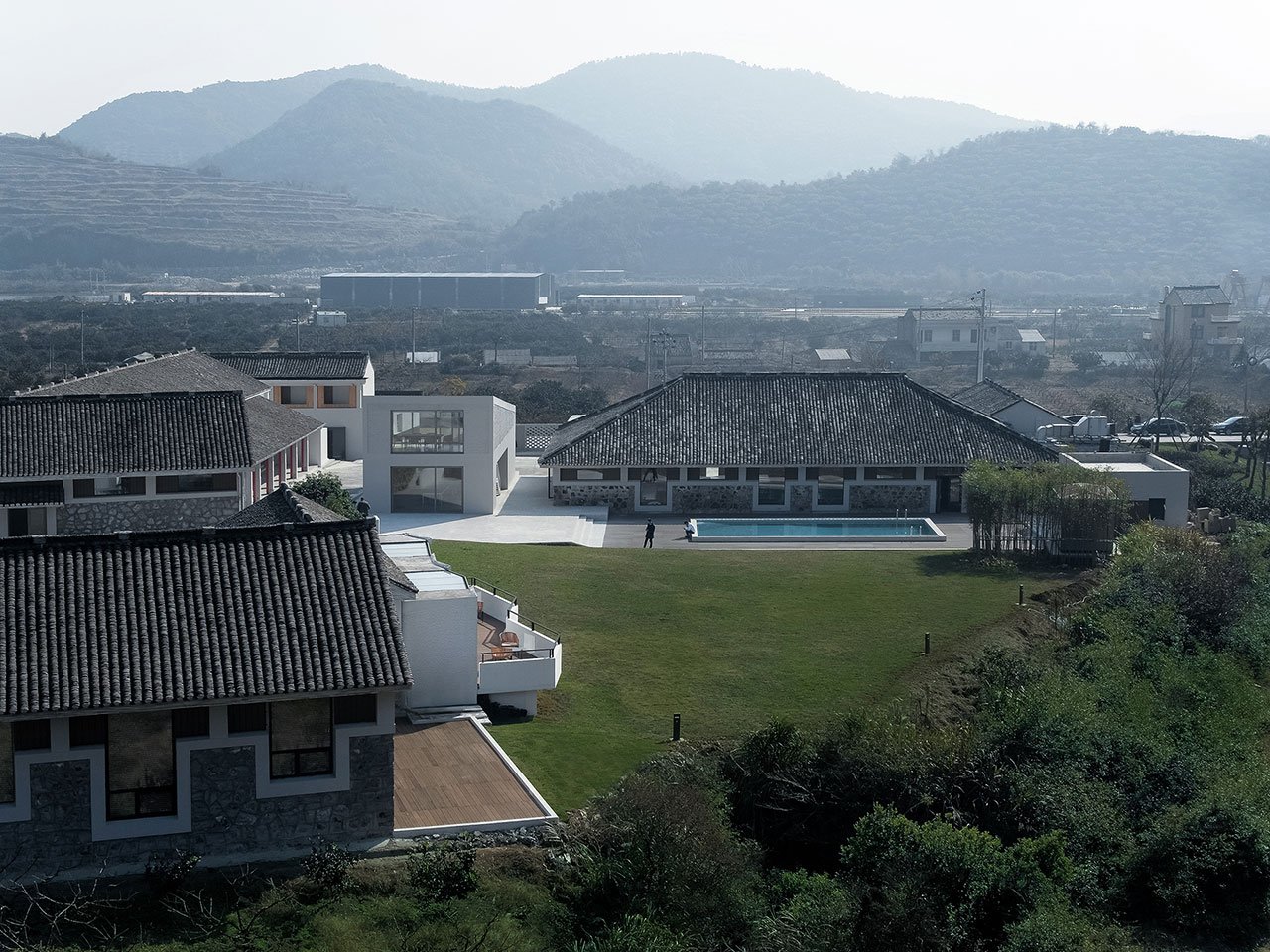
Photo by Su Shengliang.
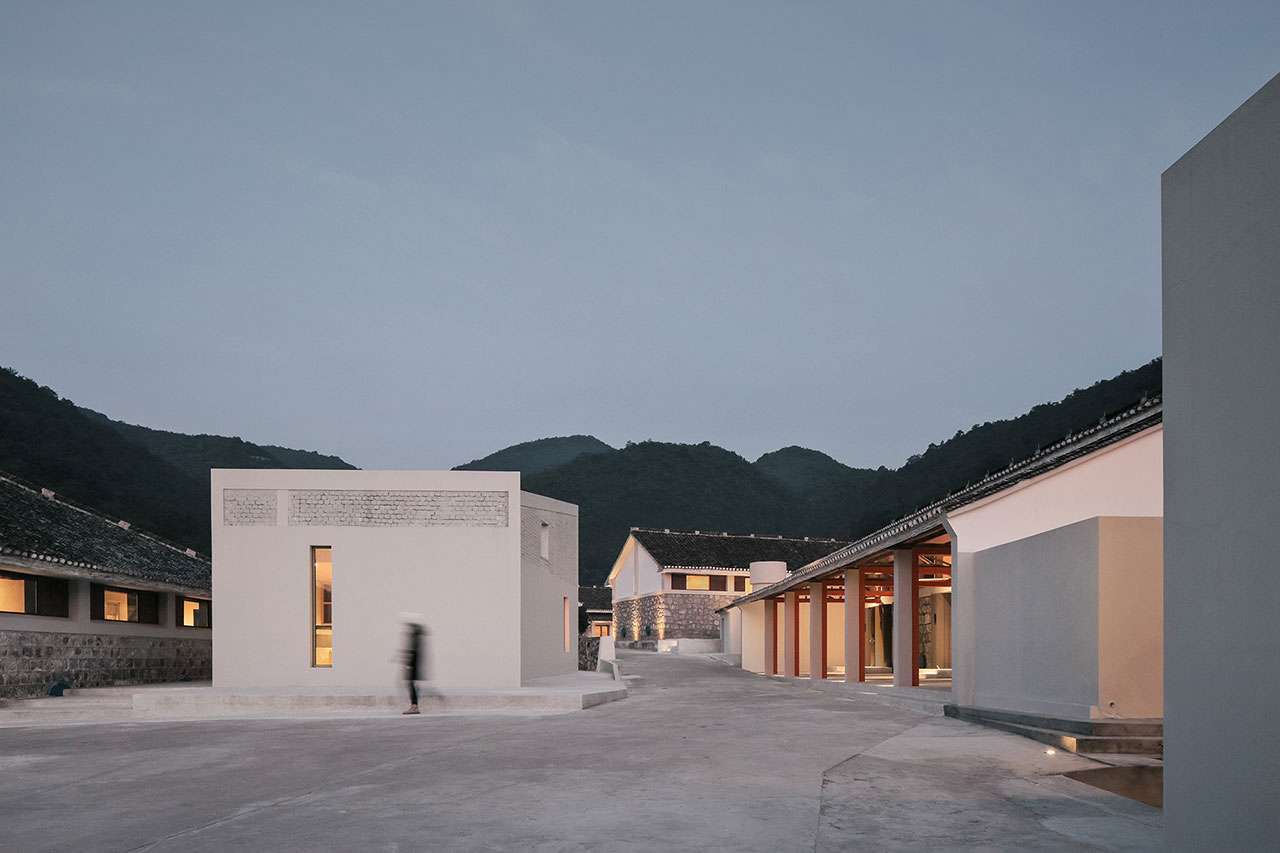
Photo by Su Shengliang.
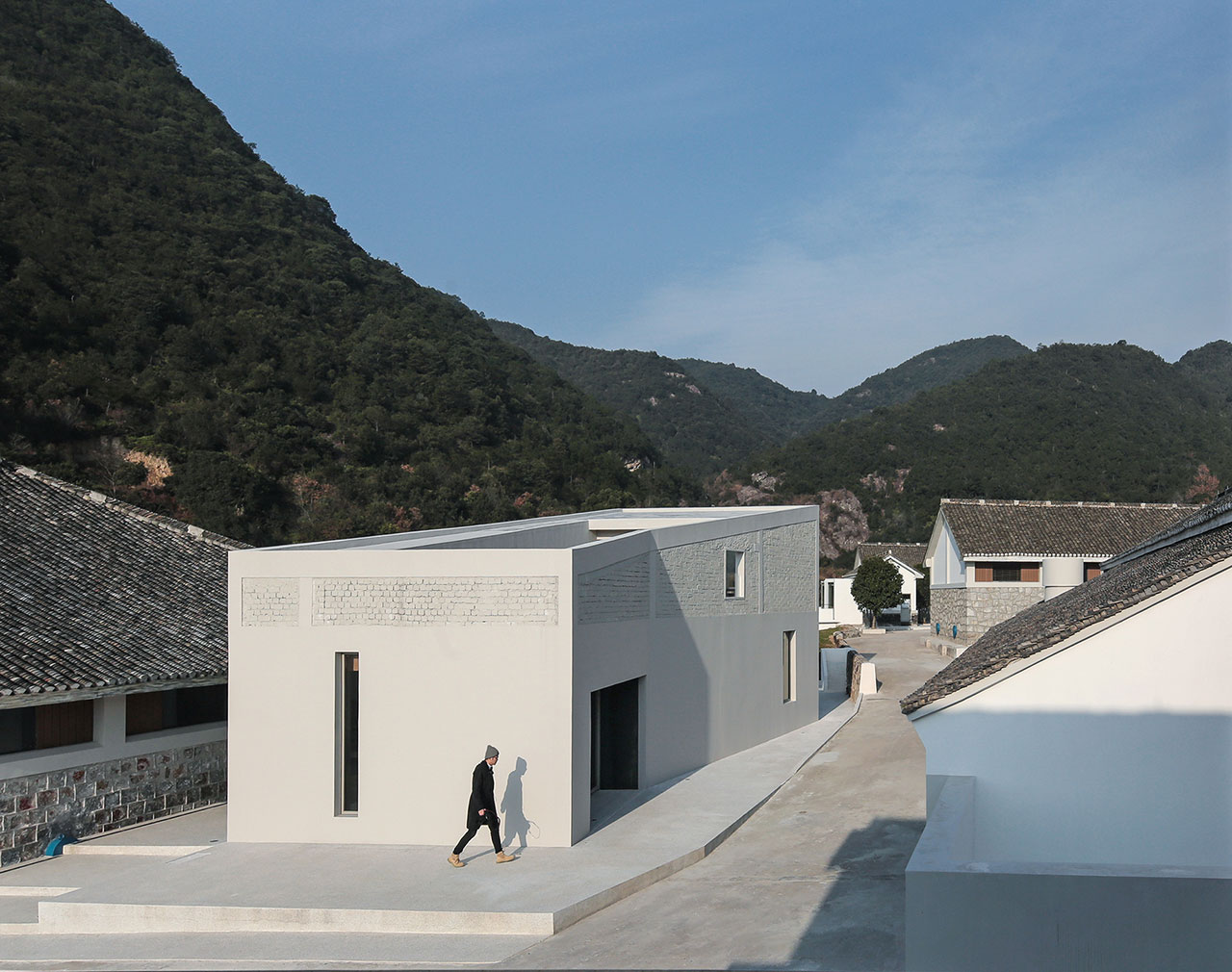
Photo by Su Shengliang.

Photo by Su Shengliang.
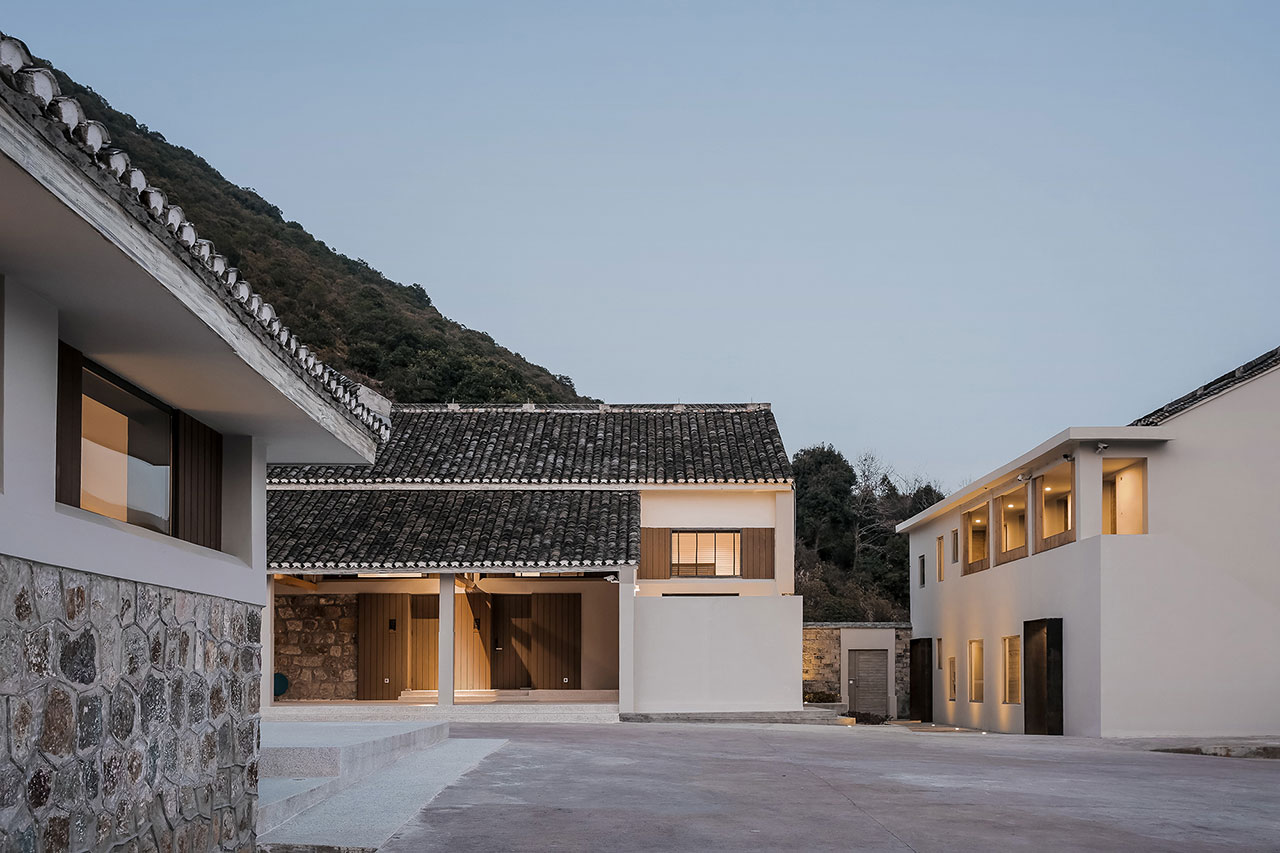
Photo by Su Shengliang.
Unlike the existing buildings that feature traditional gable roofs and rectangular floor plans, the newly built addition, which stands in front of the resort’s entrance in the place of a demolished building from the 1970s, is designed as a prismatic volume that has been shaped in response to its surroundings. In order to avoid obstructing the mountain views as guests enter the grounds, the building gradually increases in height from a single-storey where the reception is located, to two floors housing the tea room, which enjoys panoramic views courtesy of wide, floor-to-ceiling windows. Despite its angular shape and modernist sensibility, the all-white structure harmoniously blends in with the revamped rural architecture and the verdant hills beyond.
The building on the west of the reception houses the resort's restaurant and lounge area under a meticuslously restored timber roof structure, while at the back a generous terrace and outdoor pool offers guests the chance to take in the surrounding scenery in style.
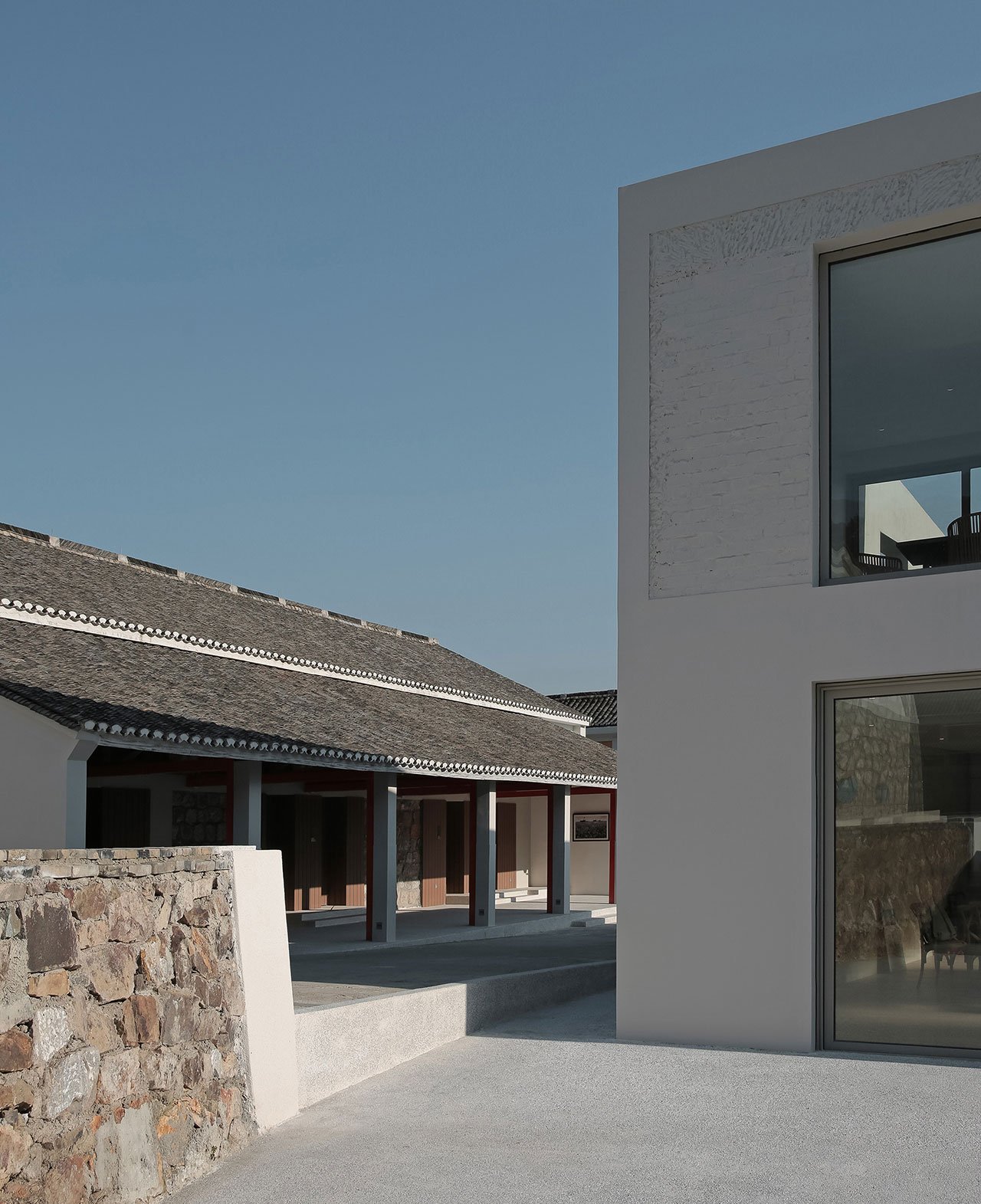
Photo by Su Shengliang.
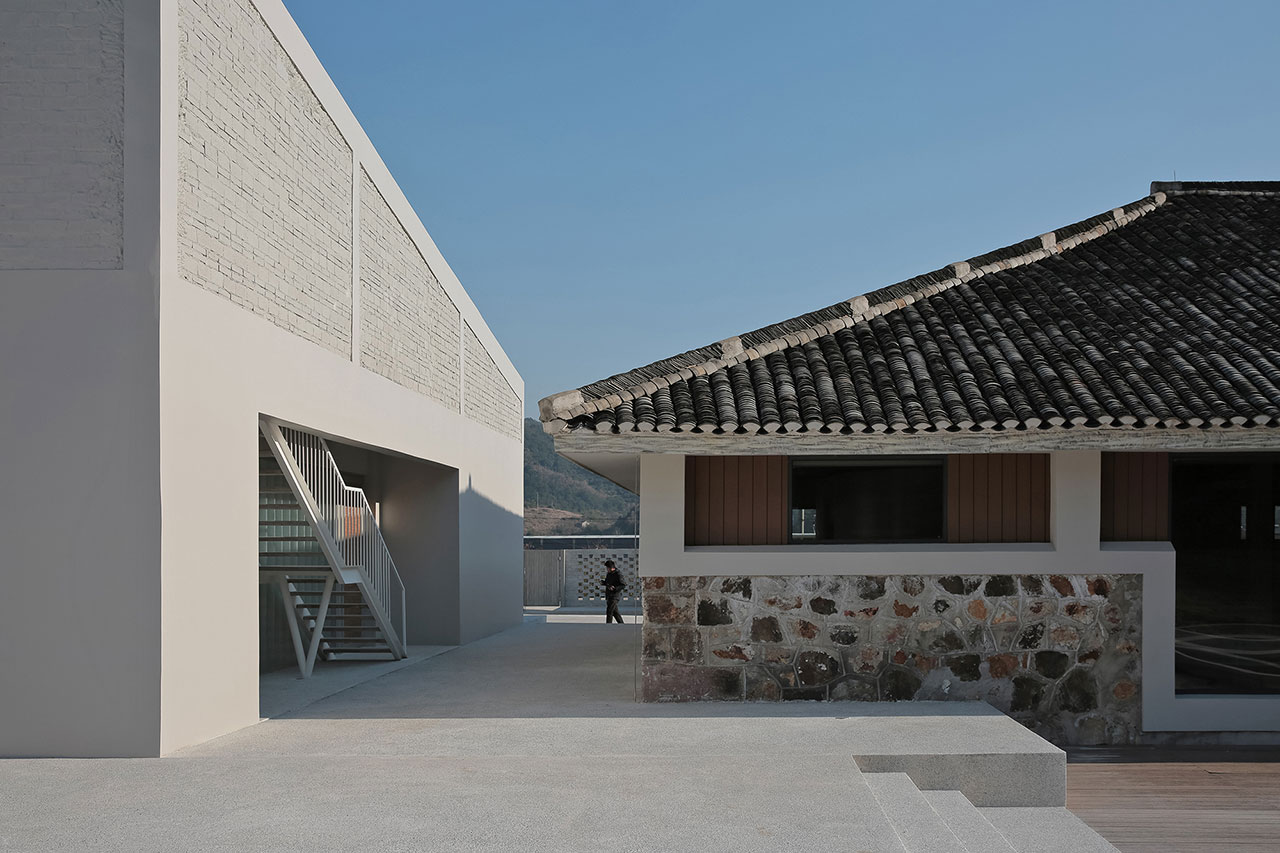
Photo by Su Shengliang.
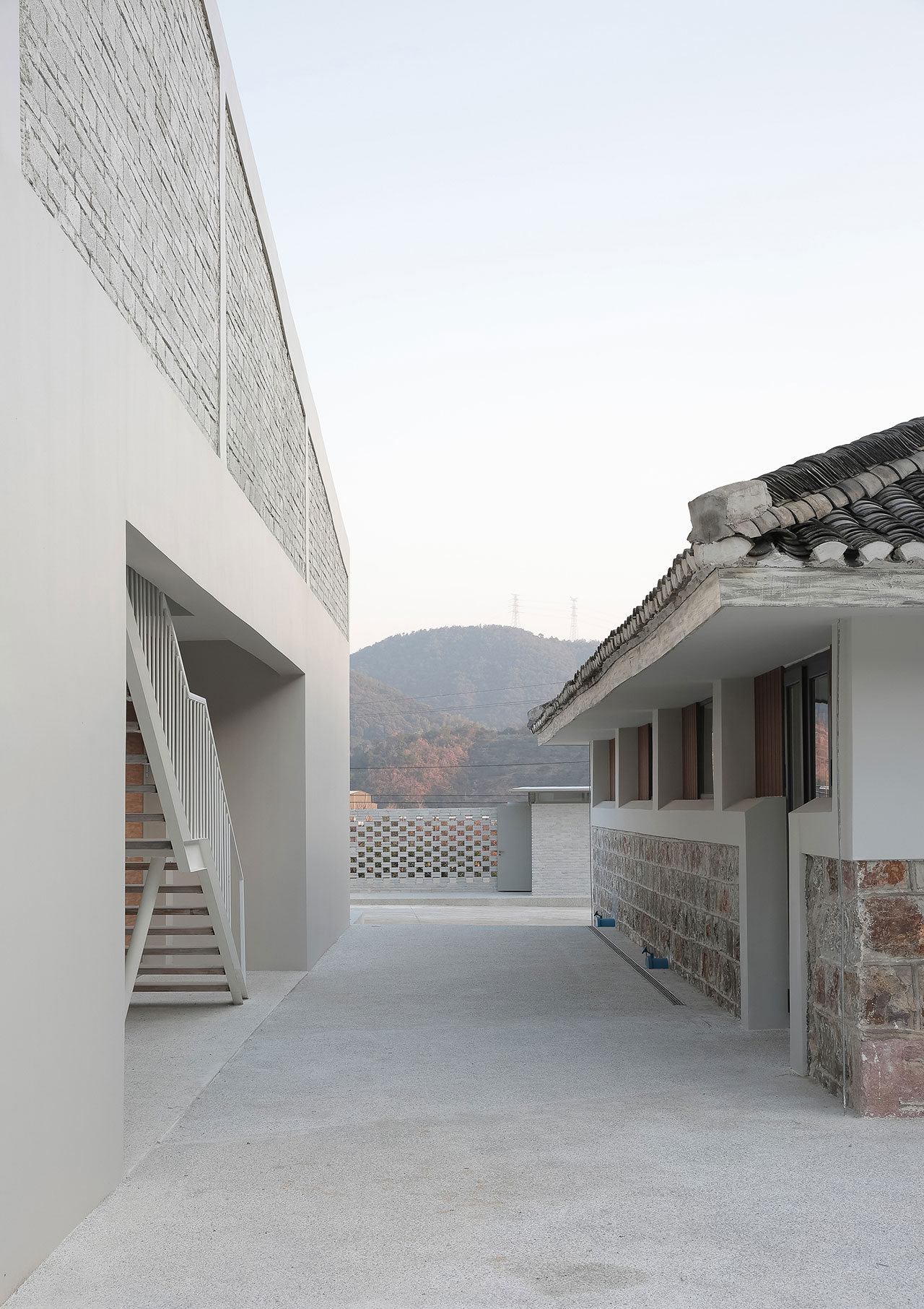
Photo by Su Shengliang.
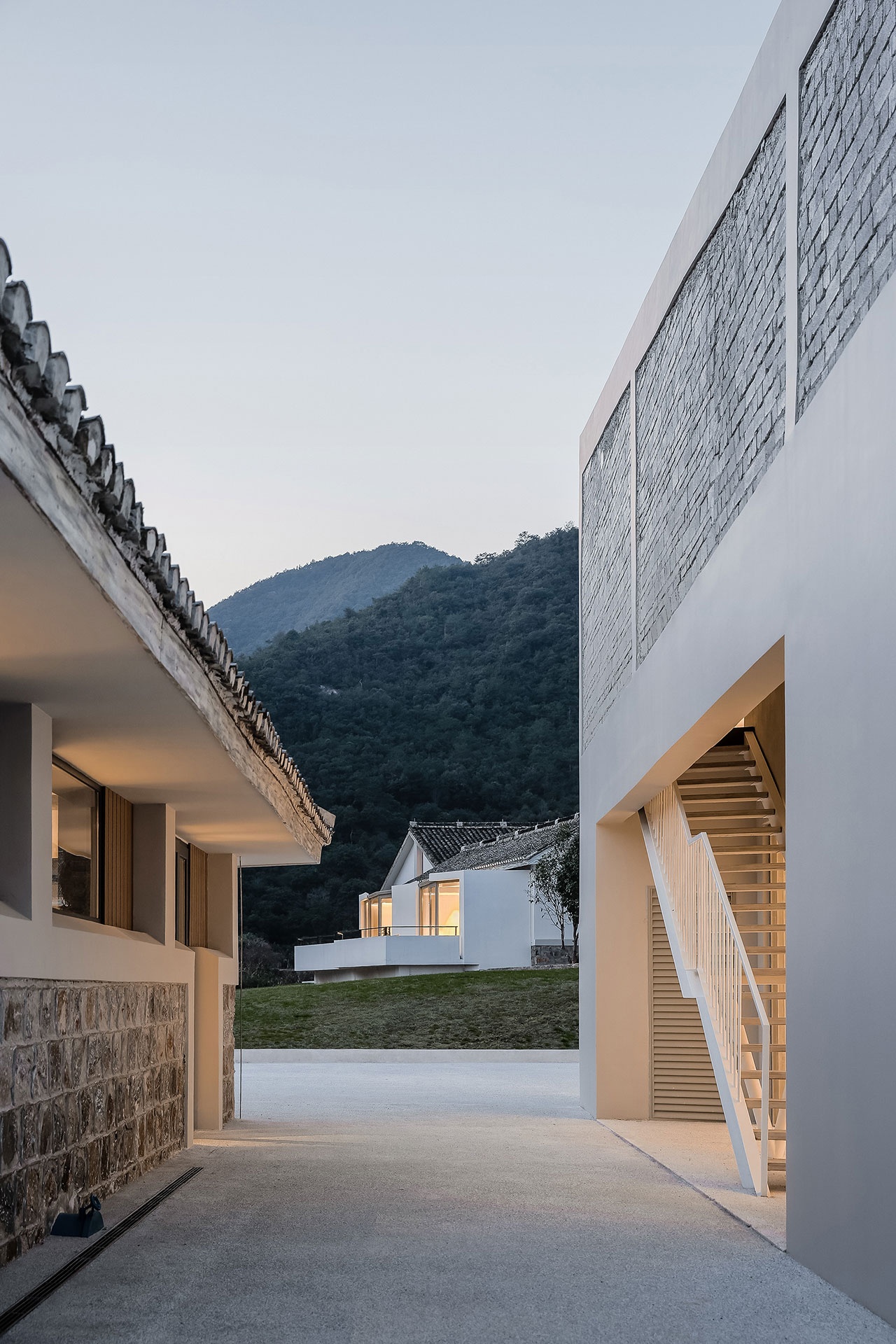
Photo by Su Shengliang.
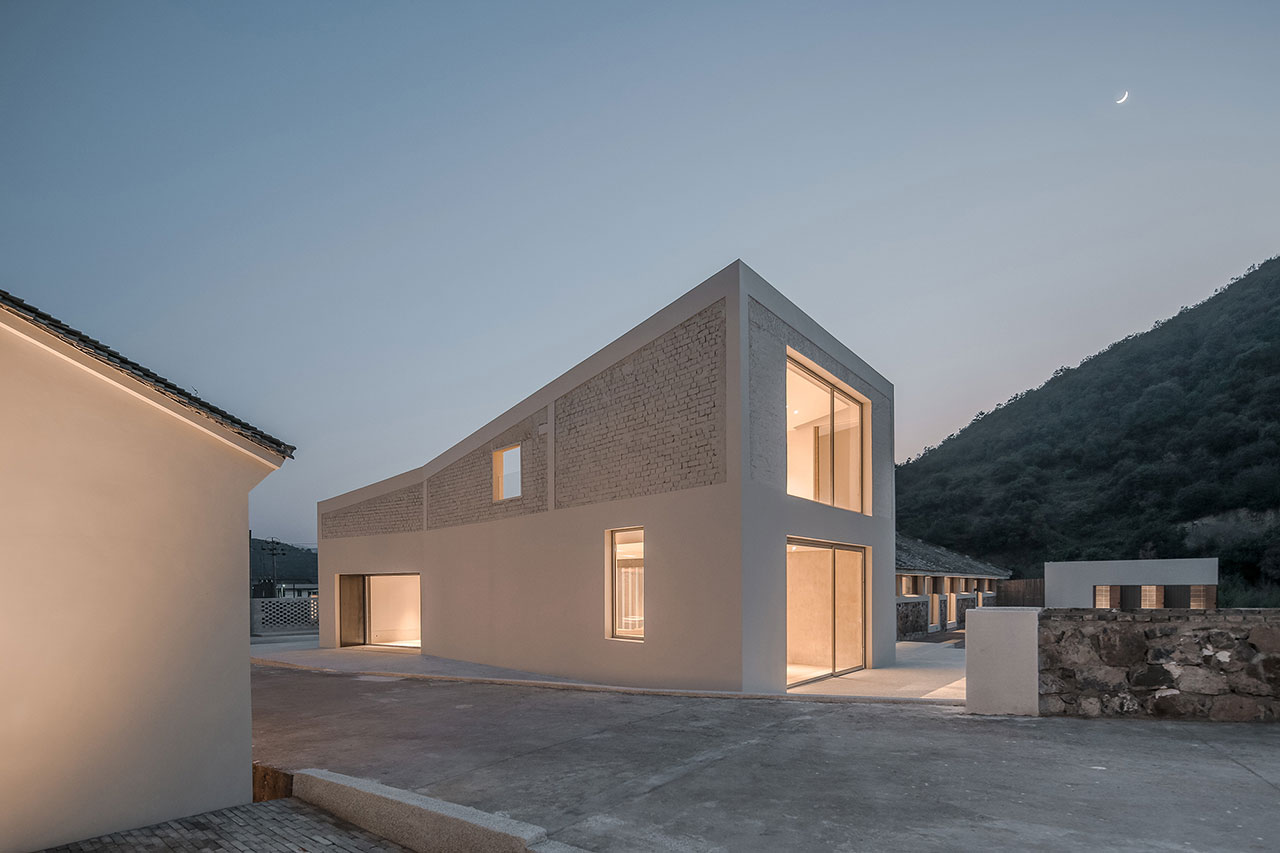
Photo by Su Shengliang.
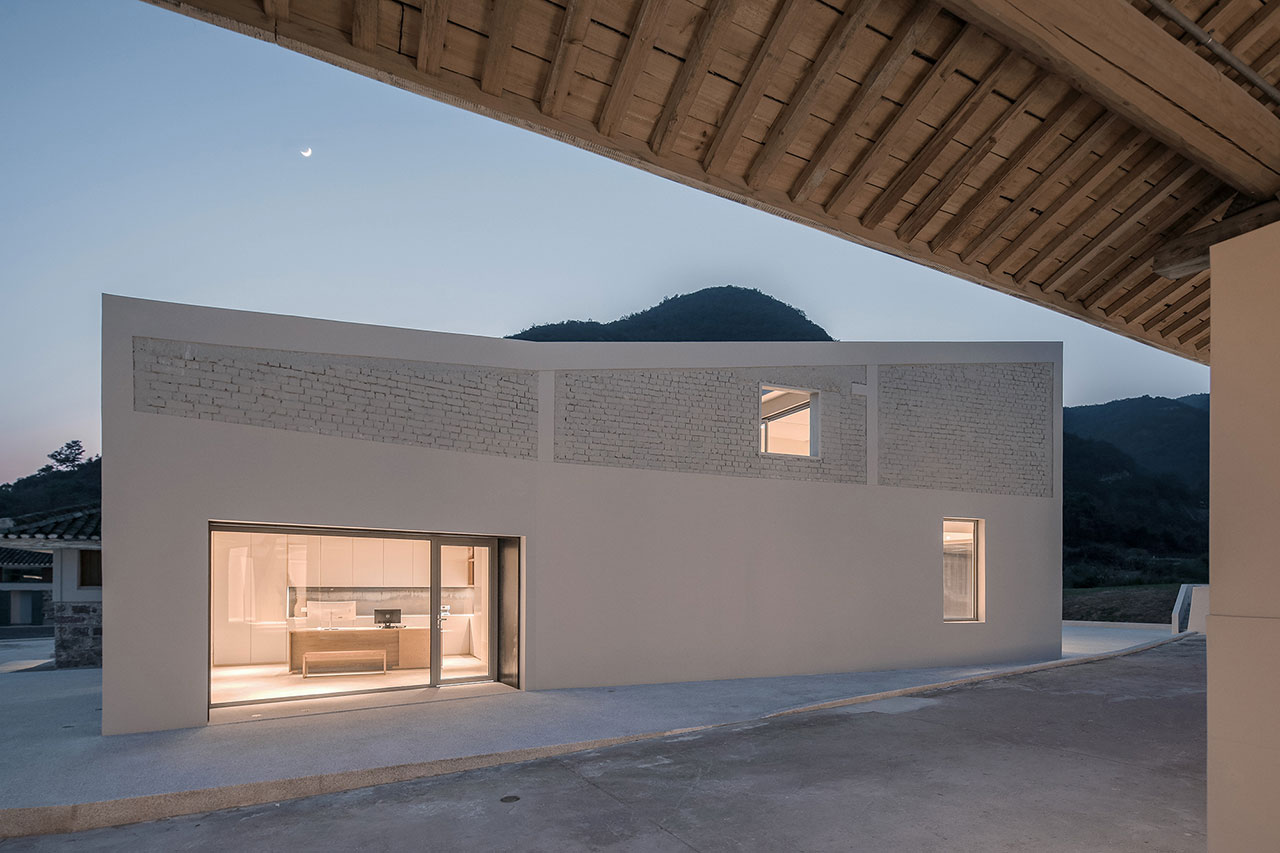
Photo by Su Shengliang.
Inside, the original timber roof structures have been revealed by removing the false ceilings to now function as a lyrical reminder of the estate’s history while imbuing the spaces with a sense of glorious spaciousness. The weathered roof trusses and timber posts, supported where necessary by red-painted steel beams, stand in juxtaposition to the minimalist décor and sparse modern furniture while the smooth, light-toned timber panelling and muted off-white and grey hues of the colour-washed walls and screed floors provide a soothing ambience.
All twenty-one guest rooms feature en-suite bathrooms that have been designed as rooms within a room, providing a more intimate scale within the confines of the double-height suites, while some also enjoy access to private balconies and sun rooms whose jagged outlines create a variety of viewpoints that bring the guests ever closer to the natural surroundings.
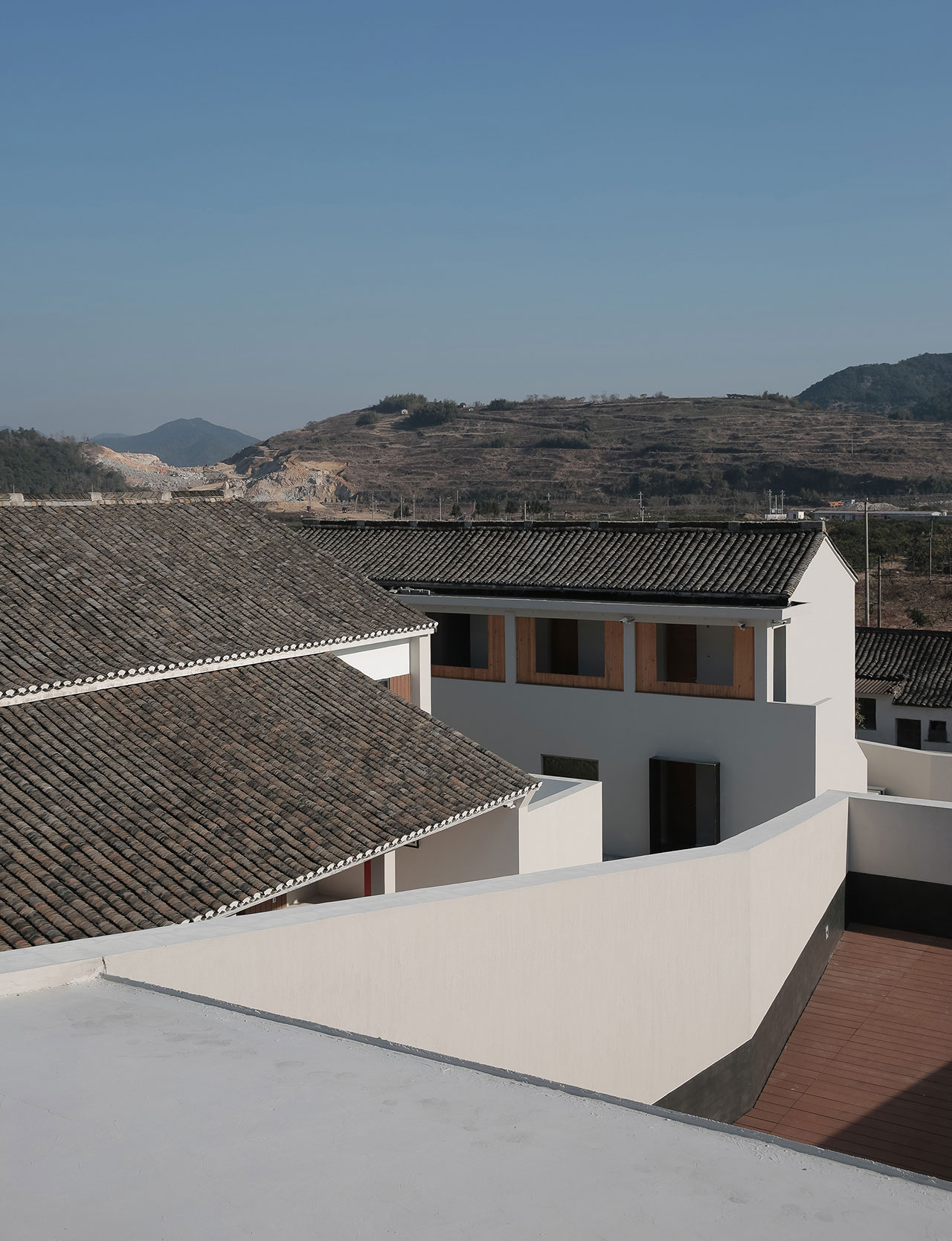
Photo by Su Shengliang.

Photo by Su Shengliang.
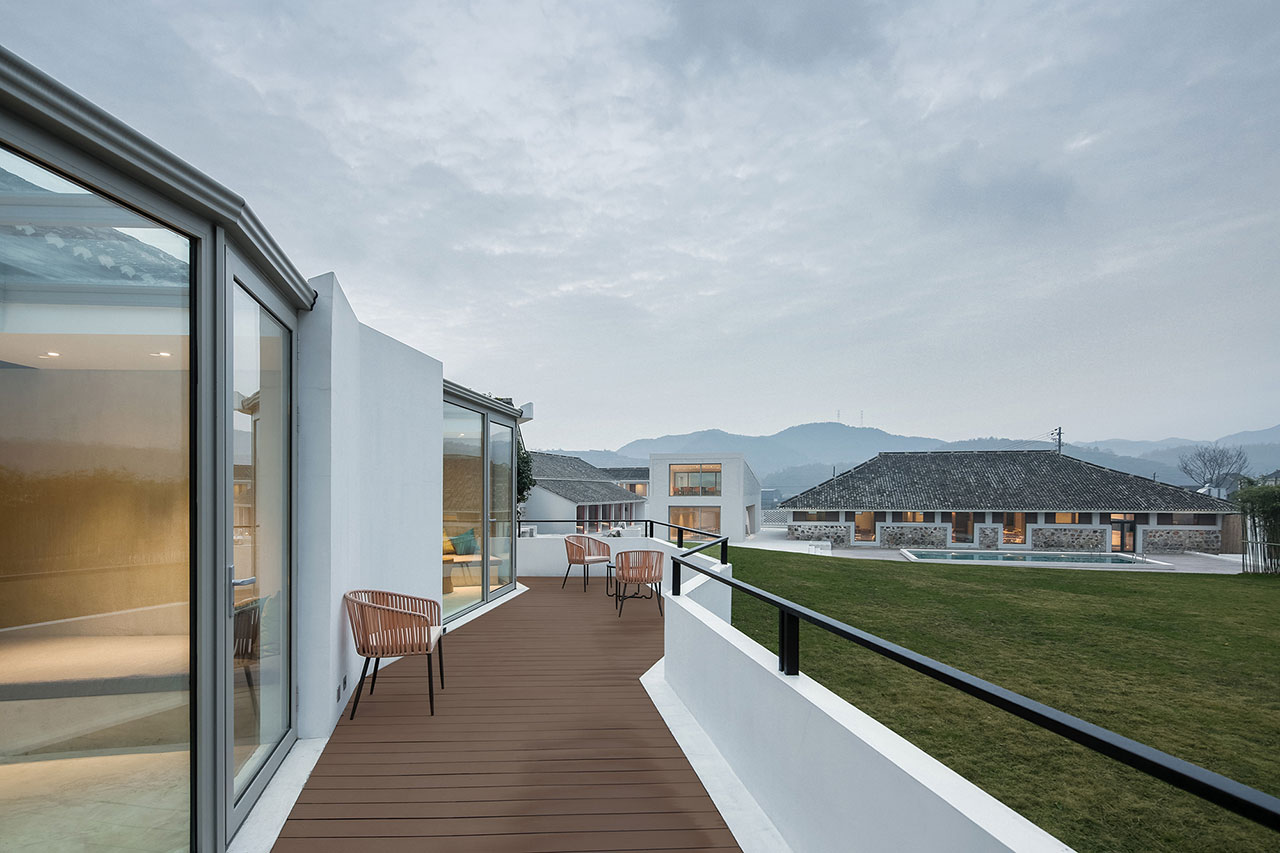
Photo by Su Shengliang.

Photo by Su Shengliang.
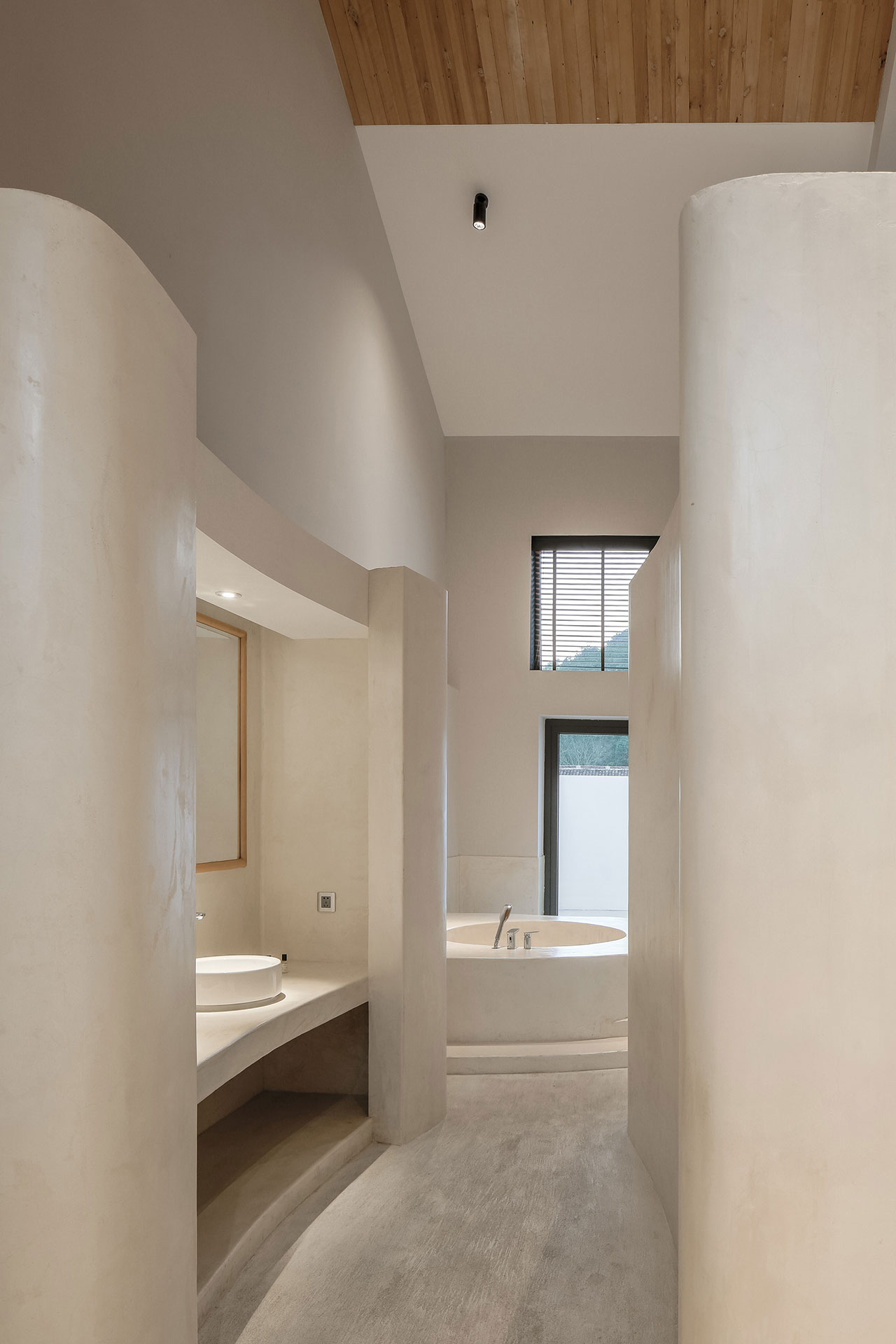
Photo by Su Shengliang.
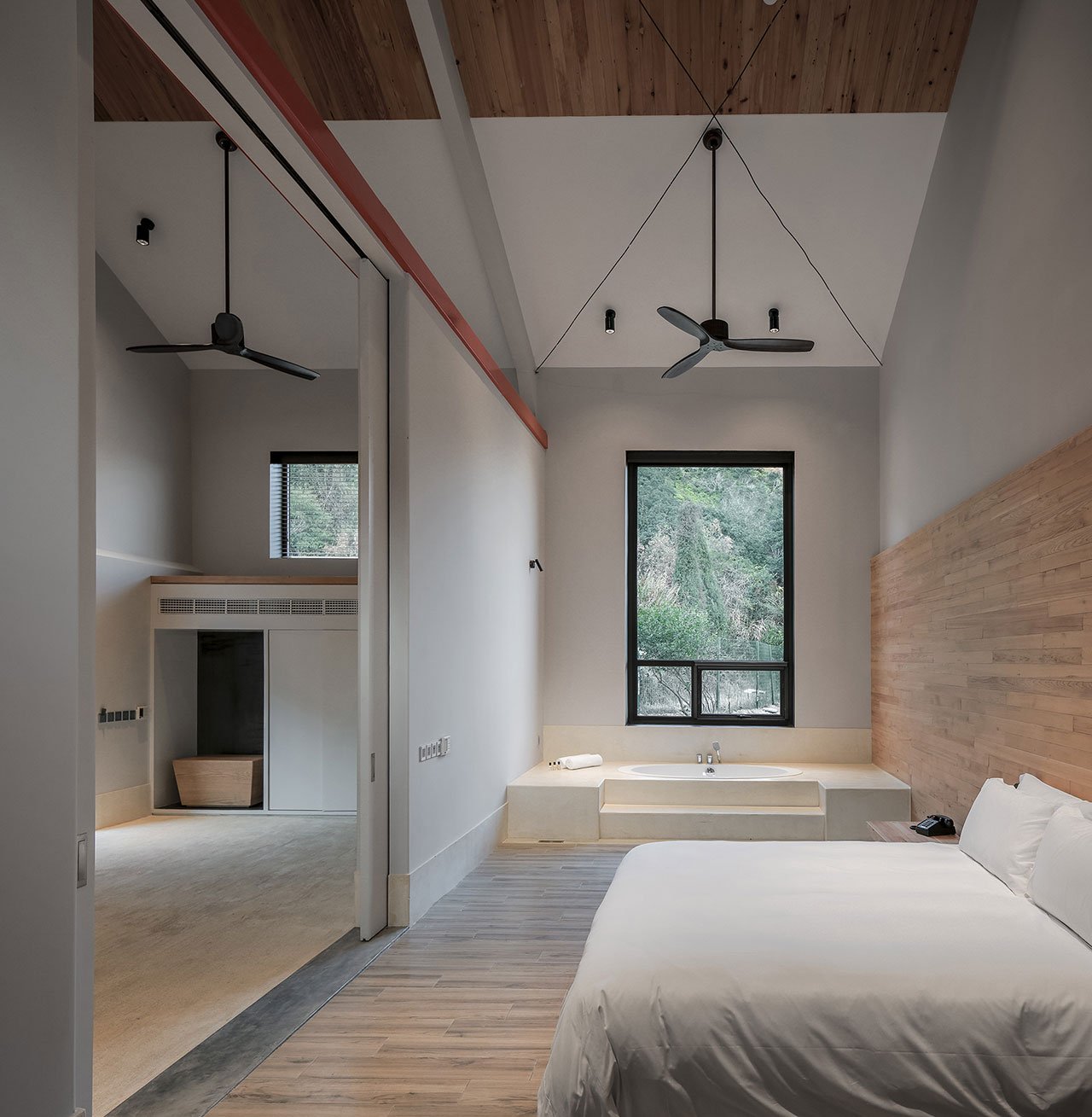
Photo by Su Shengliang.
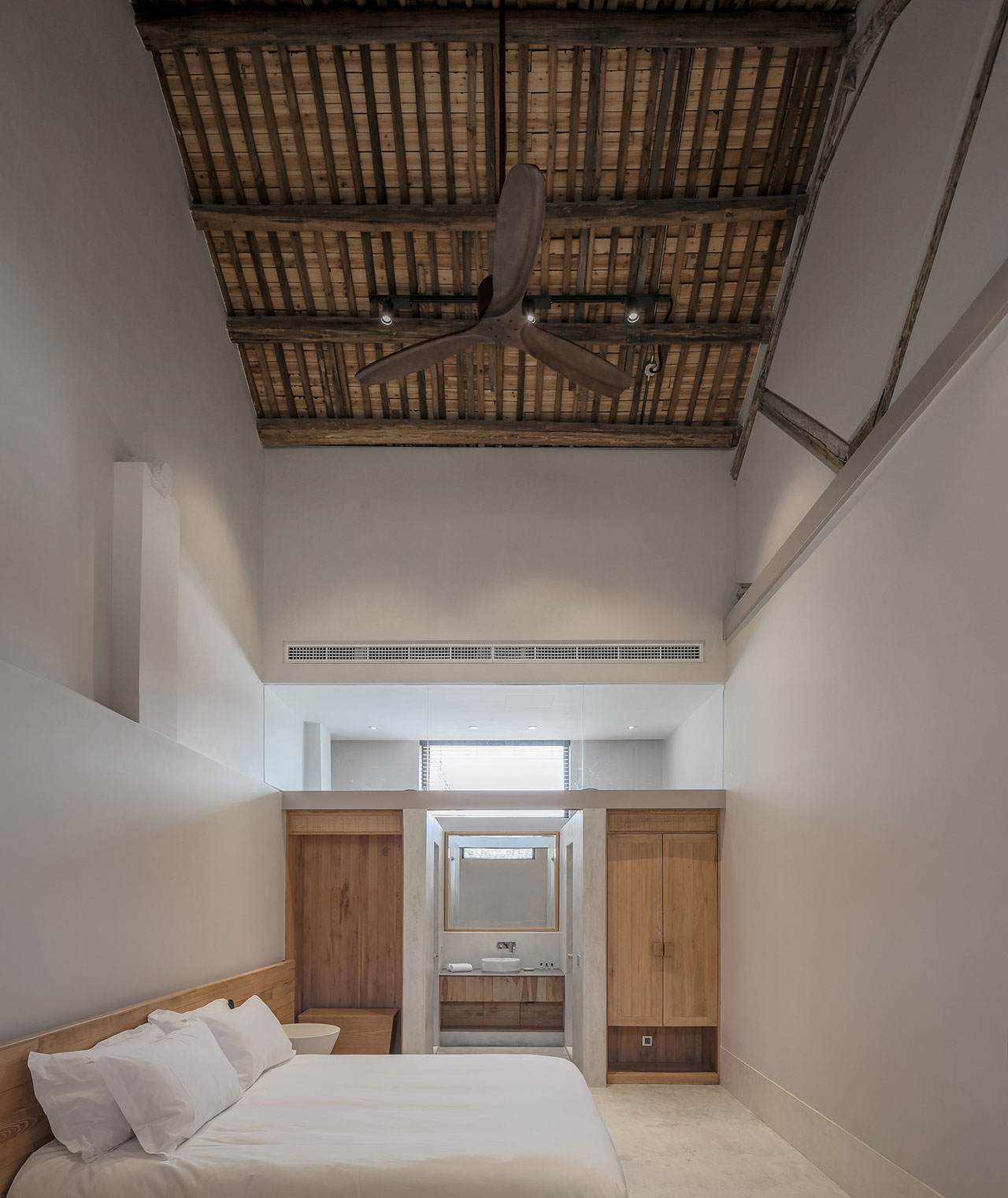
Photo by Su Shengliang.
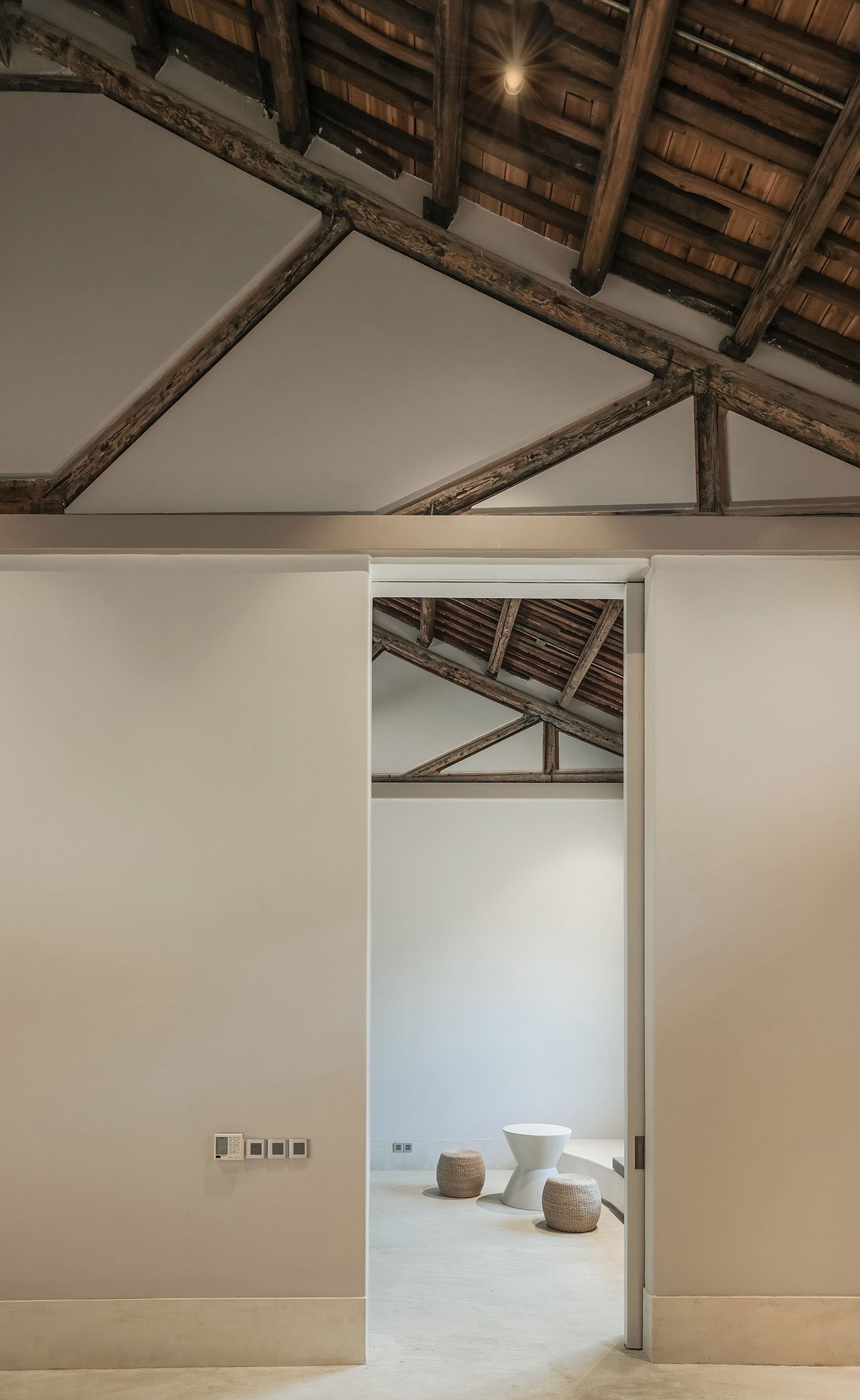
Photo by Su Shengliang.
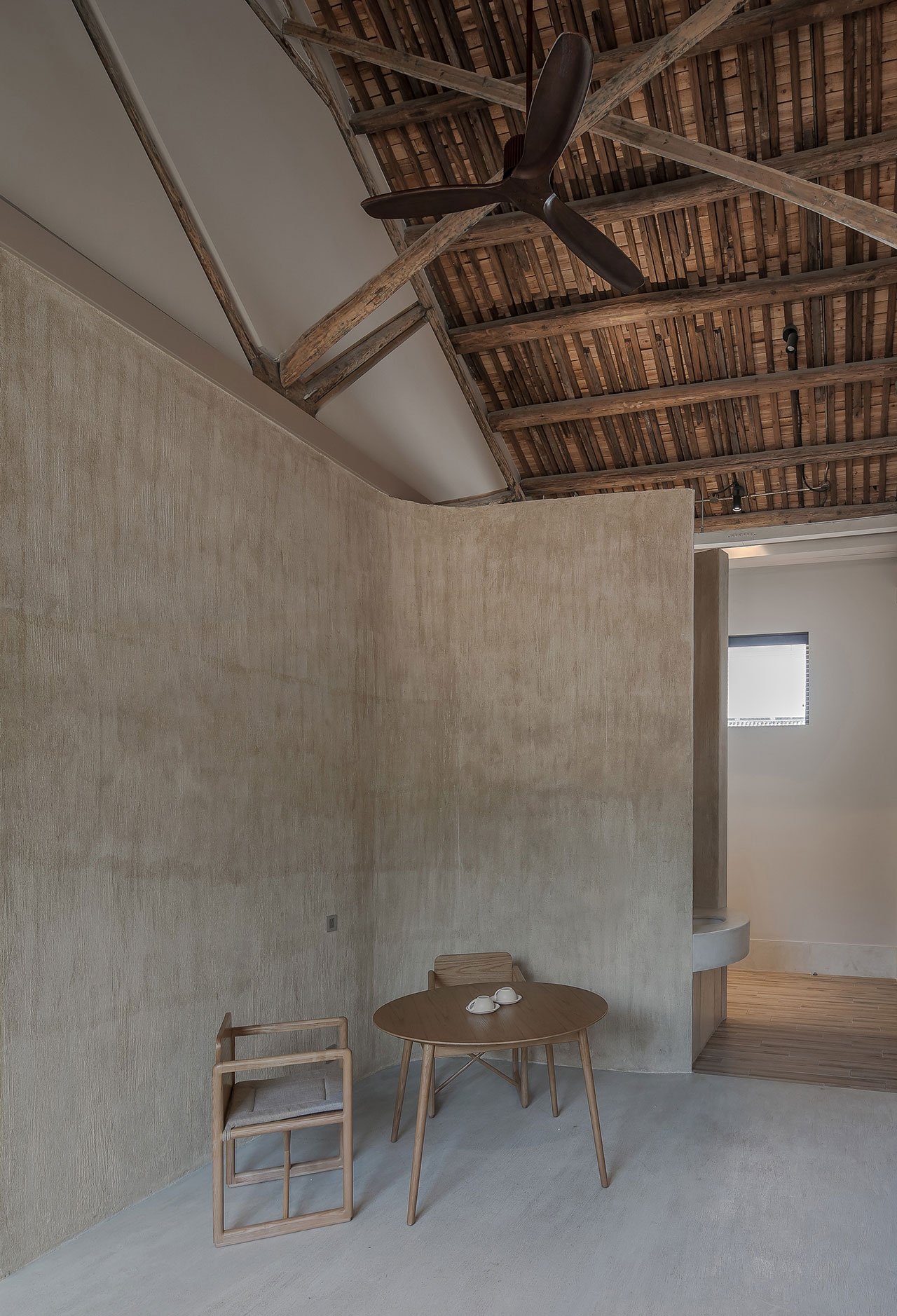
Photo by Su Shengliang.
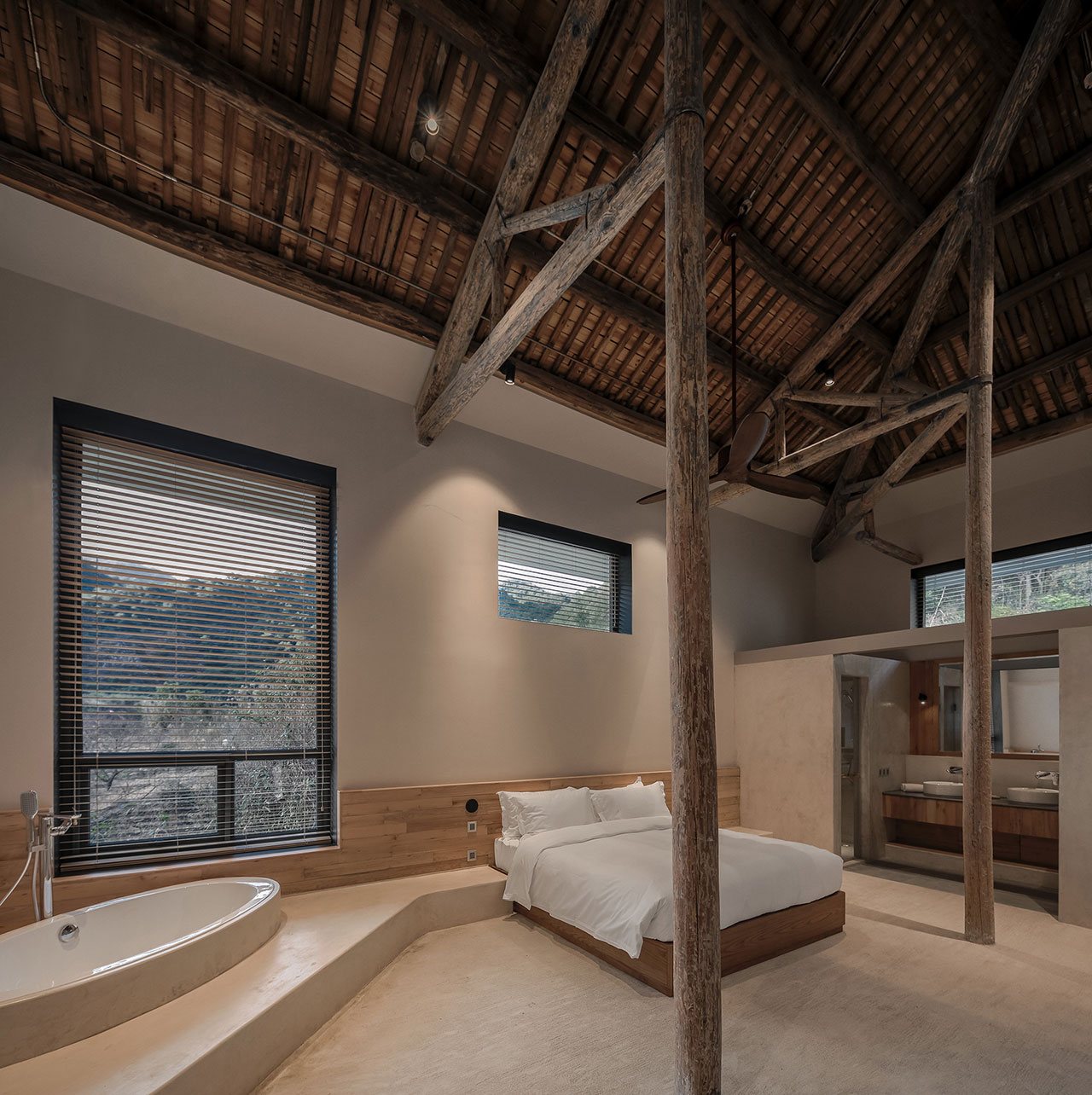
Photo by Su Shengliang.
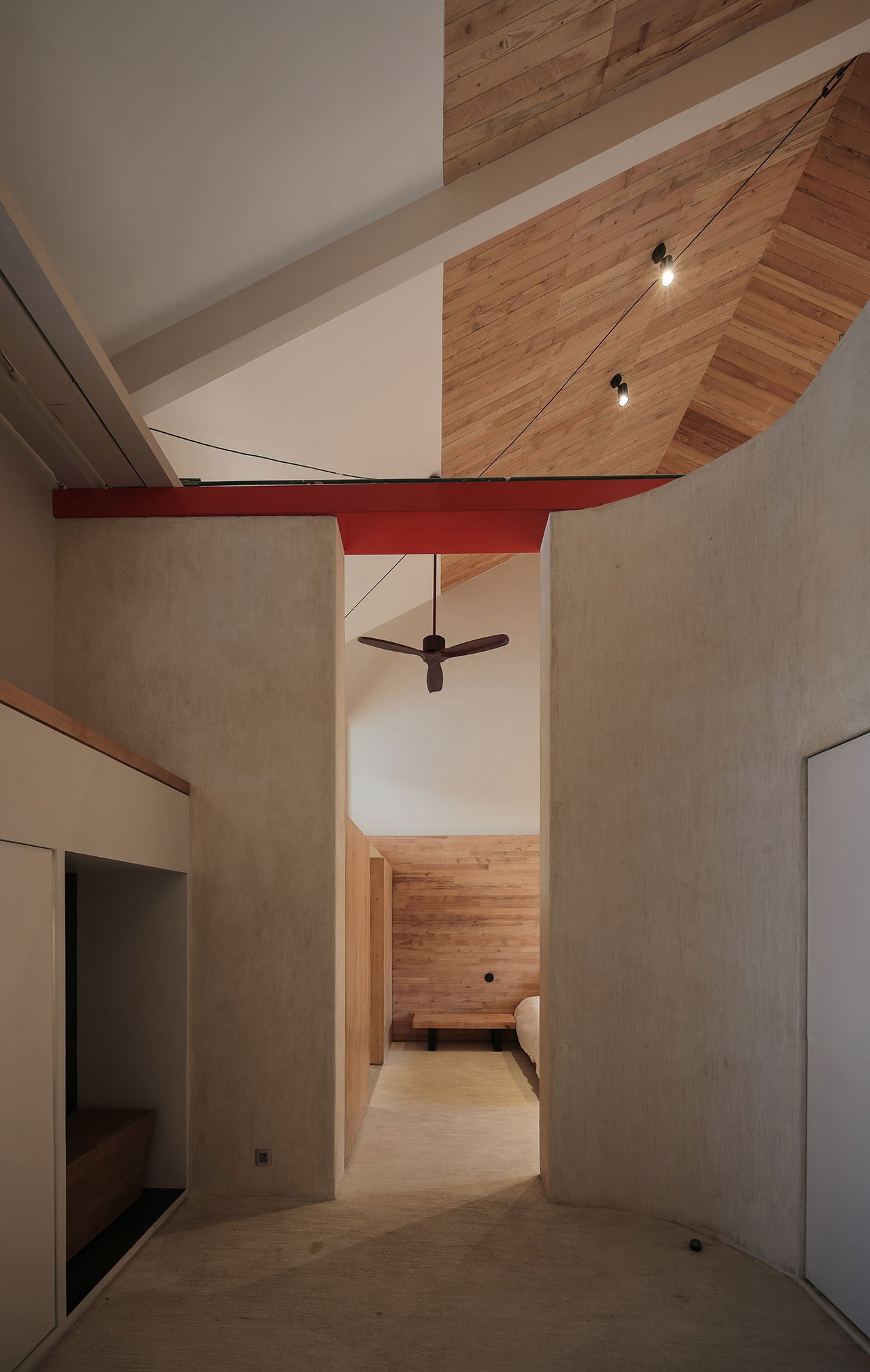
Photo by Su Shengliang.
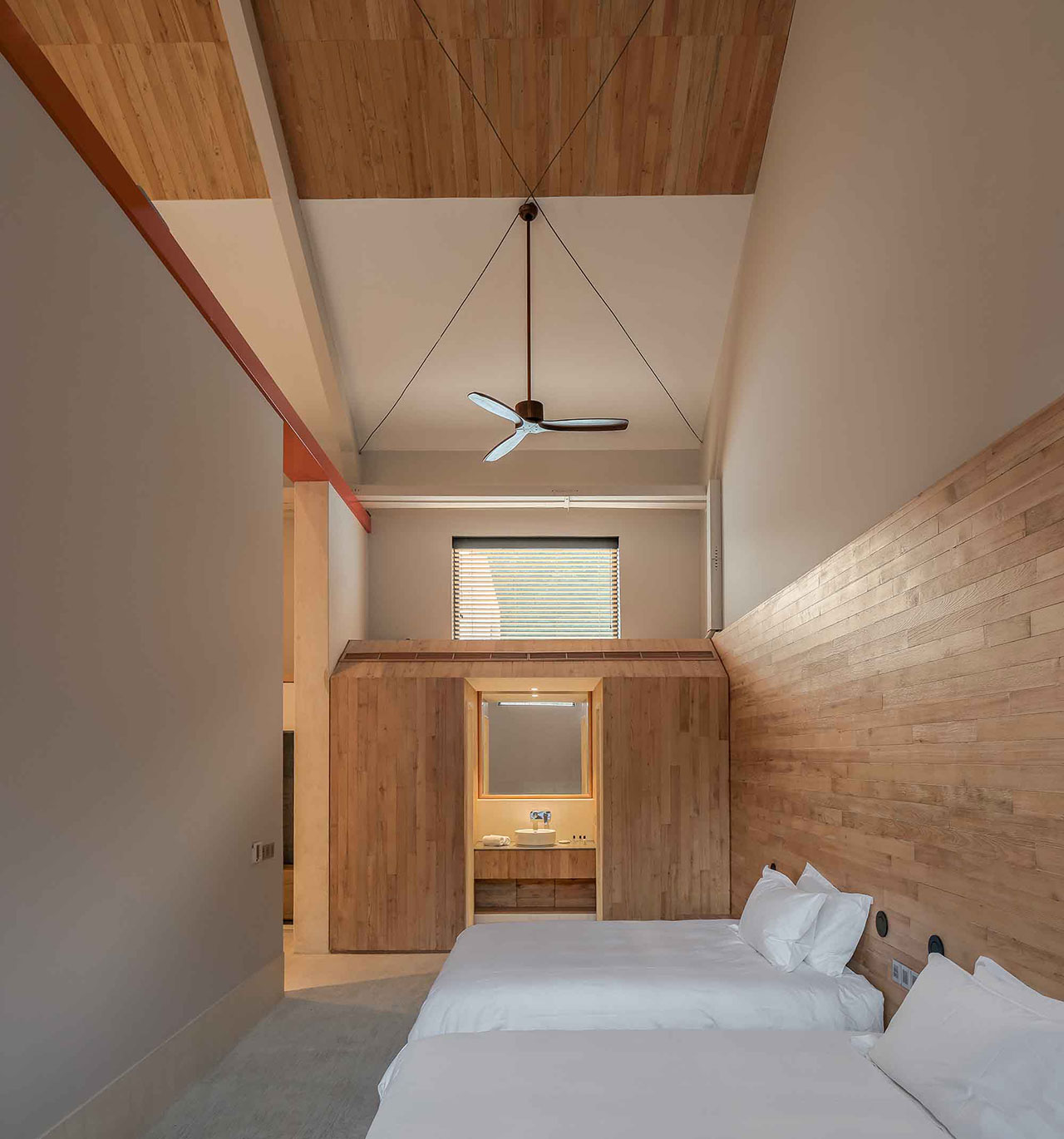
Photo by Su Shengliang.
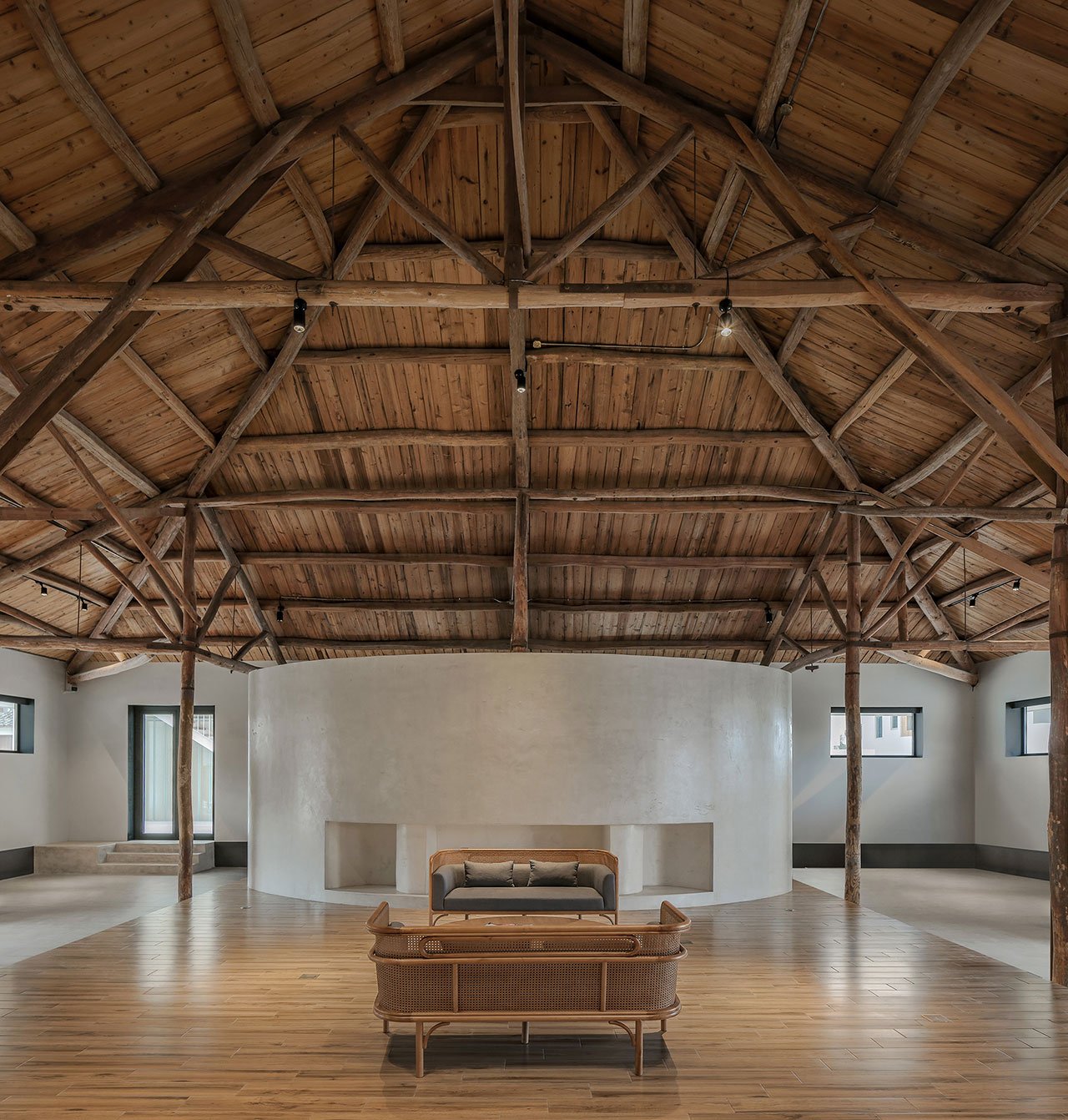
Photo by Su Shengliang.
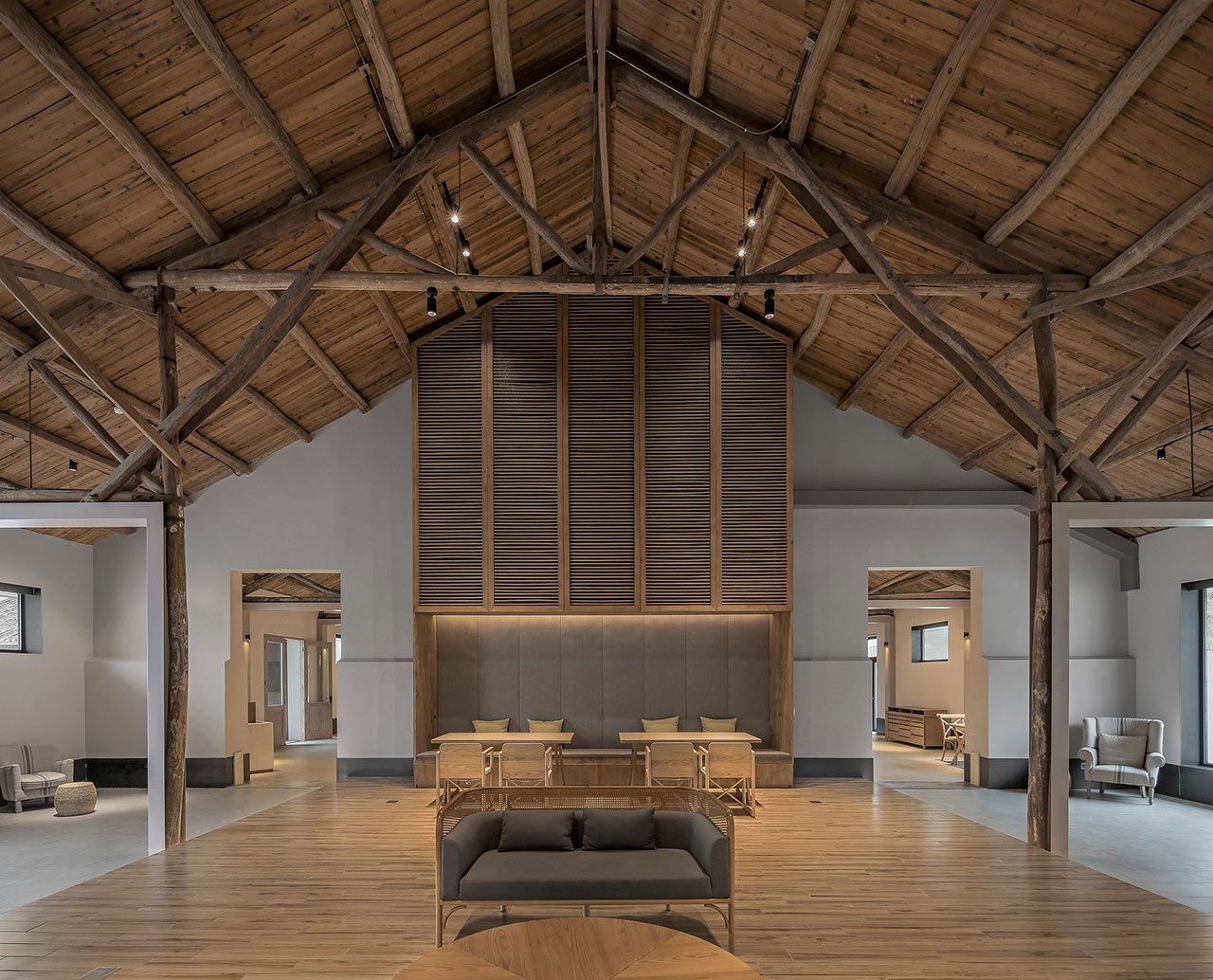
Photo by Su Shengliang.














